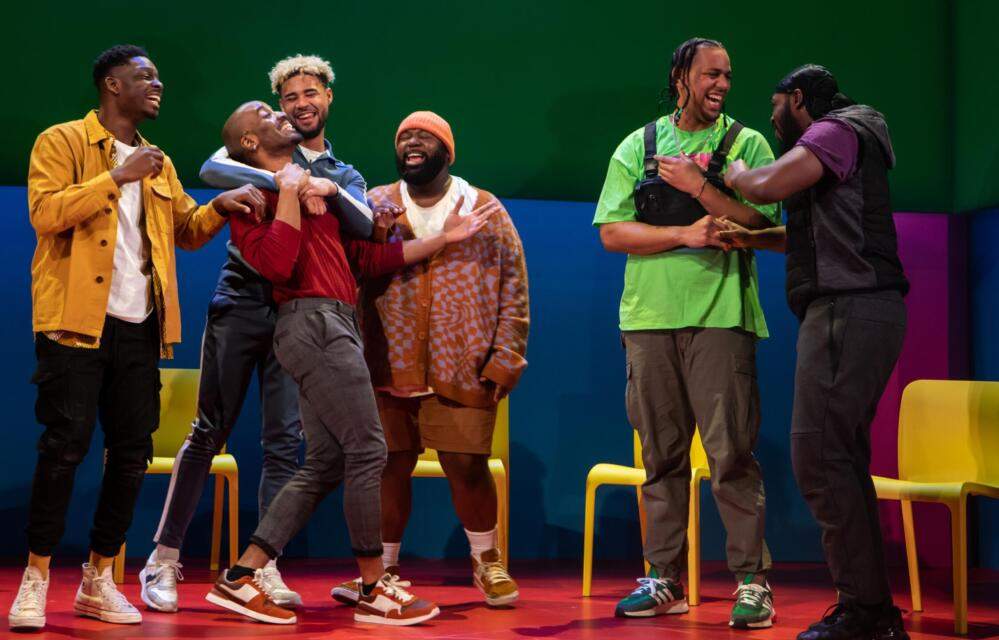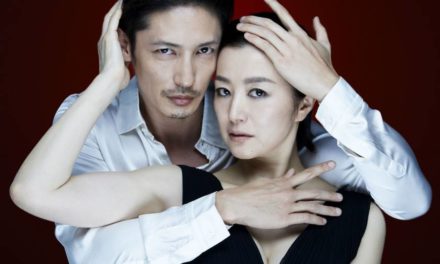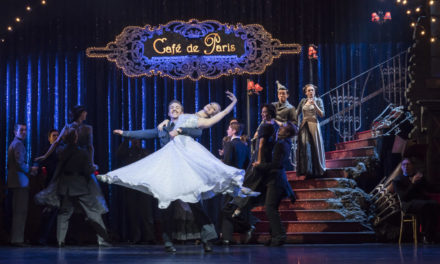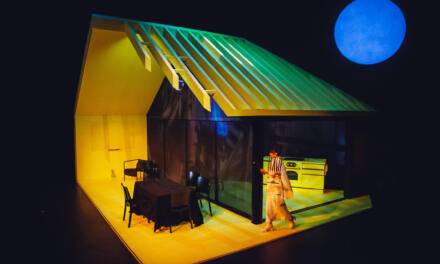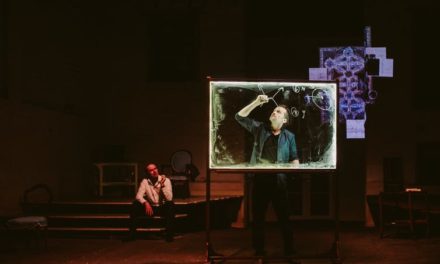Contemporary Black British theatre is admirably adamant about pushing its own boundaries and expanding its audience. A recent case in point is Ryan Calais Cameron’s bracing play For Black Boys Who Have Considered Suicide When the Hue Gets Too Heavy, which was originally conceived in the wake of the killing of Trayvon Martin in 2013 and has been developed over the last decade with young Black men and mental health groups.
As intimated by its title too, the play has been influenced by Ntozake Shange’s For Coloured Girls Who Have Considered Suicide When The Rainbow Is Enuf (1976), a “choreopoem” in which seven Black women recount their experiences of racism, sexism, and violent oppression. Cameron’s drama responds to and builds on Shange’s work by focusing on six young Black men who collectively share and meditate upon their place in the world as racialized, threatened, but also deeply resilient subjects. Inhabiting the play’s fluid and partly scattershot structure, these characters—each named in the program as a distinct shade of black—narrate moments from their lives, enact scenes of self-questioning and self-recognition, and strive to commune with one another over experiences both uplifting and devastating.
Originally commissioned by New Diorama Theatre and co-commissioned by Boundless Theatre, the play has its West End production at the Apollo Theatre presented by the Royal Court Theatre, New Diorama Theatre, and Nouveau Riche. Cameron directs a formidable cast of six actors, each of whom delivers a beautifully committed performance of distinctive taste: Mark Akintimehin, Emmanuel Akwafo, Nnabiko Ejimofor, Darragh Hand, Aruna Jalloh and Kaine Lawrence reprise their roles in their West End debuts, occupying the stage with an intensity that embodies not only these characters’ fierce spirits, but also their vulnerability and occasional despair.
The production, which was originally directed by Tristan Fynn-Aiduenu, sets great store upon movement director Theophilus O. Bailey’s near-balletic choreography, through which the ensemble gives embodied expression to their verbal accounts. The actors comfortably slide into episodes of singing and dancing, embracing the pulsating rhythms of Nicola T. Chang’s sound design. Rory Beaton’s lighting, finely attuned to the rapidly changing tenor of the text, helps create memorable tableaus on Anna Reid’s otherwise stripped-back set. The vibrant colors used on stage make it look as if we are on a playground: indeed, the stylistic range of the play’s episodes and their loose connections render For Black Boys a theatrical playground where diverse ideas and methods get generously experimented with.
In refusing to conform to a fixed pattern, Cameron’s play presents a tonally fitful ritual through which its characters are granted a space of self-examination and potential healing. Even as the piece appears overstuffed with a wealth of themes, its inclusive nature ends up offering a duly varied panorama of Black male subjectivity. For Black Boys is strongest when the individual experiences recounted in it trigger conspicuous moments of sympathy and solidarity on stage. There is an undeniable power to seeing these young men physically link together in response to their recollections of all those times when white supremacy has tried to grind them down.
The fluid style of Cameron’s bold and sure-footed play is far removed from the dramaturgies often accommodated by the West End. But its occupation of this stage feels vital and necessary, and its message remains as urgent as ever.
This post was written by the author in their personal capacity.The opinions expressed in this article are the author’s own and do not reflect the view of The Theatre Times, their staff or collaborators.
This post was written by Mert Dilek.
The views expressed here belong to the author and do not necessarily reflect our views and opinions.

